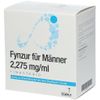community Study shows further evidence that finasteride and dutasteride take 12-18 months or more to show significant results. Do NOT give up early
The conversation discusses the effectiveness of finasteride and dutasteride in treating hair loss, emphasizing that significant results often take 12-18 months or more. Dutasteride is generally considered superior, with similar or fewer side effects than finasteride, but patience is required for noticeable improvement.
